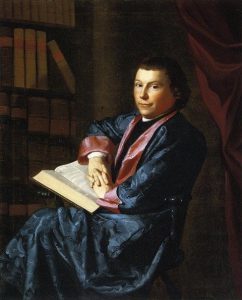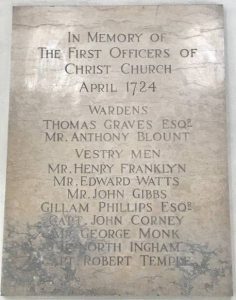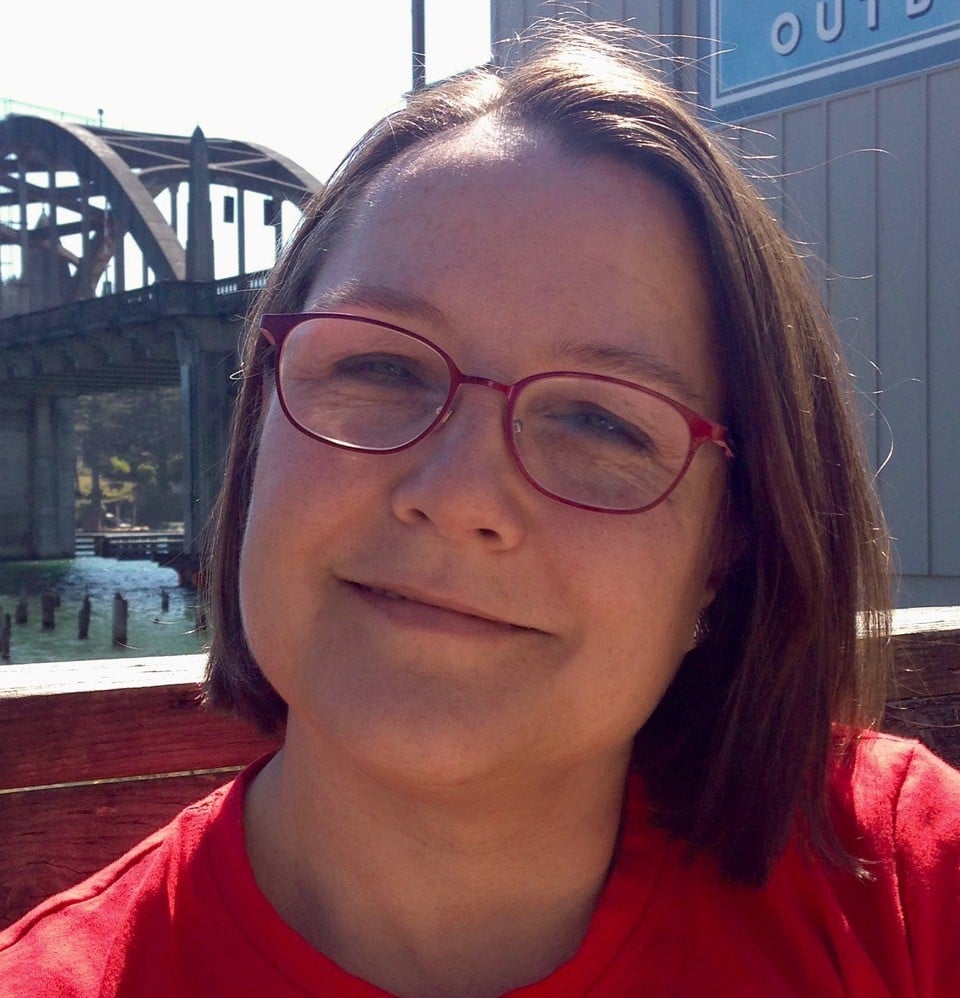 The Rev. Thomas Cary posed for this portrait by John Singleton Copley ca. 1770. Courtesy of the Museum of Fine Arts, Boston
The Rev. Thomas Cary posed for this portrait by John Singleton Copley ca. 1770. Courtesy of the Museum of Fine Arts, Boston
American Ancestors recently shared, via social media and The Weekly Genealogist, the news that the Rev. Thomas Cary’s diary (owned by NEHGS) was mentioned in a Ben Franklin’s World podcast. His diary was among the documents Susan Clair Imbaratto consulted in writing Sarah Gray Cary from Boston to Grenada: Shifting Fortunes of an American Family, 1753–1825. Combined with the anniversary of my own visit to the Chelsea, Massachusetts house in which Sarah (Gray) Cary and her husband — Thomas’s brother Samuel — lived, this news seemed like a clear invitation to write another blog post about the family.
This time I wanted to focus on Thomas’s life as a minister, a topic very close to my heart since my husband is also a minister. While the life of an eighteenth/nineteenth-century Congregational cleric has some profound differences from that of a twentieth/twenty-first-century Episcopal priest, I’ve found many diary entries that resonate with personal experience.
 In a strange coincidence, I discovered on the very day of my visit to the Bellingham-Cary House that Thomas’s maternal grandfather, the Hon. Dr. Thomas Graves, helped found the Episcopal parish of Christ Church in Boston … better known as the Old North Church. In fact, Thomas’s mother inherited the Cary house in Chelsea through the marriage of Thomas Graves to his second wife. I confess that I never imagined that sidebar to this story!
In a strange coincidence, I discovered on the very day of my visit to the Bellingham-Cary House that Thomas’s maternal grandfather, the Hon. Dr. Thomas Graves, helped found the Episcopal parish of Christ Church in Boston … better known as the Old North Church. In fact, Thomas’s mother inherited the Cary house in Chelsea through the marriage of Thomas Graves to his second wife. I confess that I never imagined that sidebar to this story!
The first two years of Thomas Cary’s diary record details of his school-keeping experience, and in the third year details begin to emerge about his studies with Mr. Barnard, pastor of the First Church in Haverhill. Thomas only ever refers to his tutor and sometime-landlady as Mr. and Mrs. Barnard, but this seems oddly formal to modern readers if they understand that Edward Barnard was not only married to Sarah Cary, Thomas’s father’s half-sister, but was also a son of Sarah Martyn, sister to Thomas’s step-grandmother.
Also mentioned is Mr. Barnard of Salem; this would be the Rev. Thomas Barnard, Edward’s brother. His son Thomas Barnard Jr. was also a Salem minister and became a “lead character” in Leslie’s Retreat, an incident on 26 February 1775 that nearly became the first shot in the American Revolution.
Having made many vestments for my husband, including those for his ordination, I confess to a thrill of excitement when reading Thomas Cary’s entry for 16 December 1764: “Mr. Rawson preach’d[;] first time of wearing my Rustle gown” (the silk gown worn in church by ministers of the time). Then there are the details of Thomas’s ordination. In addition to day-by-day accounts in the course of his 1768 diary — including on 10 May “My father & the company from Charlestown came into Town” — Thomas devoted a full extra page to recording the details of his call to serve the church in Newburyport.
10 May 1768: “My father & the company from Charlestown came into Town.”
“January 25 1768 The Church met & voted to give Me a Call, 20 Members were present, 12 Voted for it, 5 ag^t it & 3 stood neuter, Febr^y the 1st The Parish met & concurred with the Churches [sic] Vote, & Voted also to give Me £750 Salary[,] the weekly Contribution, the Use of the Parsonage Lands, & to find Me a Parsonage House. Most of those who dissented in the Church now voted in favor of the Proceeding, & Seven of the Parish opposed. March 9th gave my Answer in the Negative[.] March 17th The Parish met & voted £25 as an Addition to my Salary. March 25 Accepted the Call of the First Parish in Newburyport. May 11th I was ordained[.] Mr Johnson of Newbury began with Prayer. Mr Barnard of Haverhill preached 2 Cor[inthians] 12, 15–18[.] Mr Wingate of Almsbury [Amesbury] gave the Charge[.] Mr Prentice of Charlestown gave the right hand of Fellowship. Mr Fogg of Kensington concluded with Prayers—“
I confess that I think Thomas was a little stingy in refusing the parish’s first offer, since he later accepted it with only a 3.2% salary increase. Also, the Biblical text his uncle preached on seemed so bizarre when I looked up the citation that I had to double-check it … which fortunately was possible, since it was printed by Edes and Gill and is available both online as a Google Book and in several historic reprint formats.
Share this:

About Pamela Athearn Filbert
Pamela Athearn Filbert was born in Berkeley, California, but considers herself a “native Oregonian born in exile,” since her maternal great-great-grandparents arrived via the Oregon Trail, and she herself moved to Oregon well before her second birthday. She met her husband (an actual native Oregonian whose parents lived two blocks from hers in Berkeley) in London, England. She holds a B.A. from the University of Oregon, and has worked as a newsletter and book editor in New York City and Salem, Oregon; she was most recently the college and career program coordinator at her local high school.View all posts by Pamela Athearn Filbert →